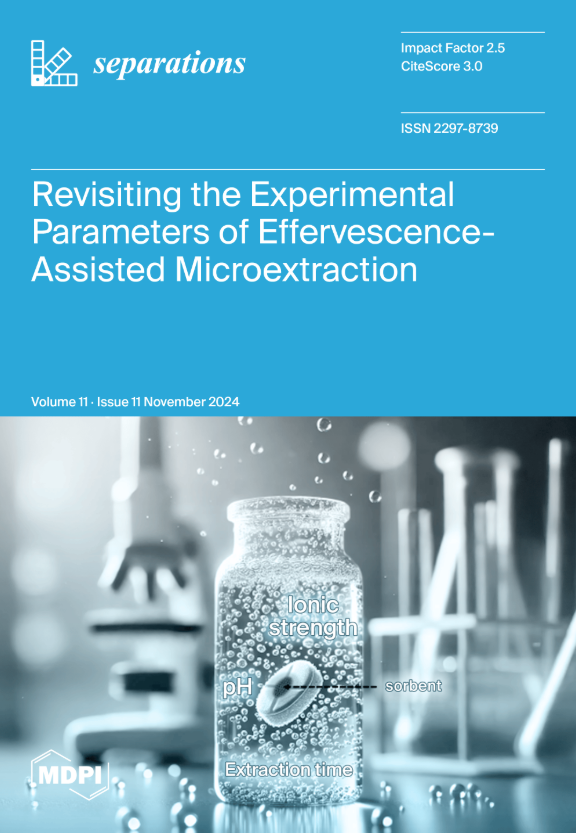基于纳米结构的油水分离:机理与现状
IF 2.7
4区 工程技术
Q3 CHEMISTRY, ANALYTICAL
引用次数: 0
摘要
灵活有效的油水分离方法对于减少污染物排放、保护水和燃料资源至关重要。近年来,人们对水和燃料净化,尤其是油水分离的基础研究和工程应用越来越感兴趣。迄今为止,具有特殊润湿特性的过滤材料已广泛应用于油水分离领域。纳米结构材料是下一代油水分离技术最具吸引力的候选材料之一。本综述系统地总结了使用纳米结构材料进行油水分离的机理和现状。基本上,可以通过使用具有特定润湿性和纳米结构的纳米结构材料来实现油水分离。在此,我们详细讨论了两种一般方法及其过滤机制:(1) 基于特定表面润湿性的选择性过滤技术,该技术只允许油或水渗透,同时阻挡杂质;(2) 采用多孔海绵、纤维或气凝胶的吸收技术,该技术可选择性地吸收不纯的油或水滴。此外,本文还讨论了主要的失效模式。本文的目的是(1) 总结利用纳米技术进行油水分离的方法;(2) 提高人们利用纳米技术治理水污染的环保意识;(3) 揭示不同方法的特点,为优化过滤材料的性能提供重要的理论依据。比较了几种油水分离的方法。此外,还介绍了每种方法的原理和应用范围。本文章由计算机程序翻译,如有差异,请以英文原文为准。
Nanostructure-Based Oil–Water Separation: Mechanism and Status
Flexible and effective methods for oil–water separation are crucial for reducing pollutant emissions and safeguarding water and fuel resources. In recent years, there has been growing interest in fundamental research and engineering applications related to water and fuel purification, especially oil–water separation. To date, filter materials with special wetting characteristics have been widely used in oil–water separation. Nanostructured materials are one of the most attractive candidates for next-generation oil–water separation. This review systematically summarizes the mechanisms and current status of oil–water separation using nanostructured materials. Basically, this can be achieved by using nanostructured materials with specific wettability and nanostructures. Here, we provide a detailed discussion of two general approaches and their filtration mechanisms: (1) the selective filtration technique, based on specific surface wettability, which allows only oil or water to penetrate while blocking impurities; (2) the absorption technique, employing porous sponges, fibers, or aerogels, which selectively absorbs impure oil or water droplets. Furthermore, the main failure modes are discussed in this review. The purposes of this article are: (1) to summarize the methods of oil–water separation by nanotechnology; (2) to raise the level of environmental protection consciousness of water pollution by using nanotechnology; (3) to tease out the features of different approaches and provide a pivotal theoretical basis to optimize the performance of filtering materials. Several approaches for oil and water separation are compared. Furthermore, the principle and application scope of each method are introduced.
求助全文
通过发布文献求助,成功后即可免费获取论文全文。
去求助
来源期刊

Separations
Chemistry-Analytical Chemistry
CiteScore
3.00
自引率
15.40%
发文量
342
审稿时长
12 weeks
期刊介绍:
Separations (formerly Chromatography, ISSN 2227-9075, CODEN: CHROBV) provides an advanced forum for separation and purification science and technology in all areas of chemical, biological and physical science. It publishes reviews, regular research papers and communications. Our aim is to encourage scientists to publish their experimental and theoretical results in as much detail as possible. There is no restriction on the length of the papers. The full experimental details must be provided so that the results can be reproduced. There are, in addition, unique features of this journal:
Manuscripts regarding research proposals and research ideas will be particularly welcomed.
Electronic files and software regarding the full details of the calculation and experimental procedure, if unable to be published in a normal way, can be deposited as supplementary material.
Manuscripts concerning summaries and surveys on research cooperation and projects (that are funded by national governments) to give information for a broad field of users.
The scope of the journal includes but is not limited to:
Theory and methodology (theory of separation methods, sample preparation, instrumental and column developments, new separation methodologies, etc.)
Equipment and techniques, novel hyphenated analytical solutions (significantly extended by their combination with spectroscopic methods and in particular, mass spectrometry)
Novel analysis approaches and applications to solve analytical challenges which utilize chromatographic separations as a key step in the overall solution
Computational modelling of separations for the purpose of fundamental understanding and/or chromatographic optimization
 求助内容:
求助内容: 应助结果提醒方式:
应助结果提醒方式:


